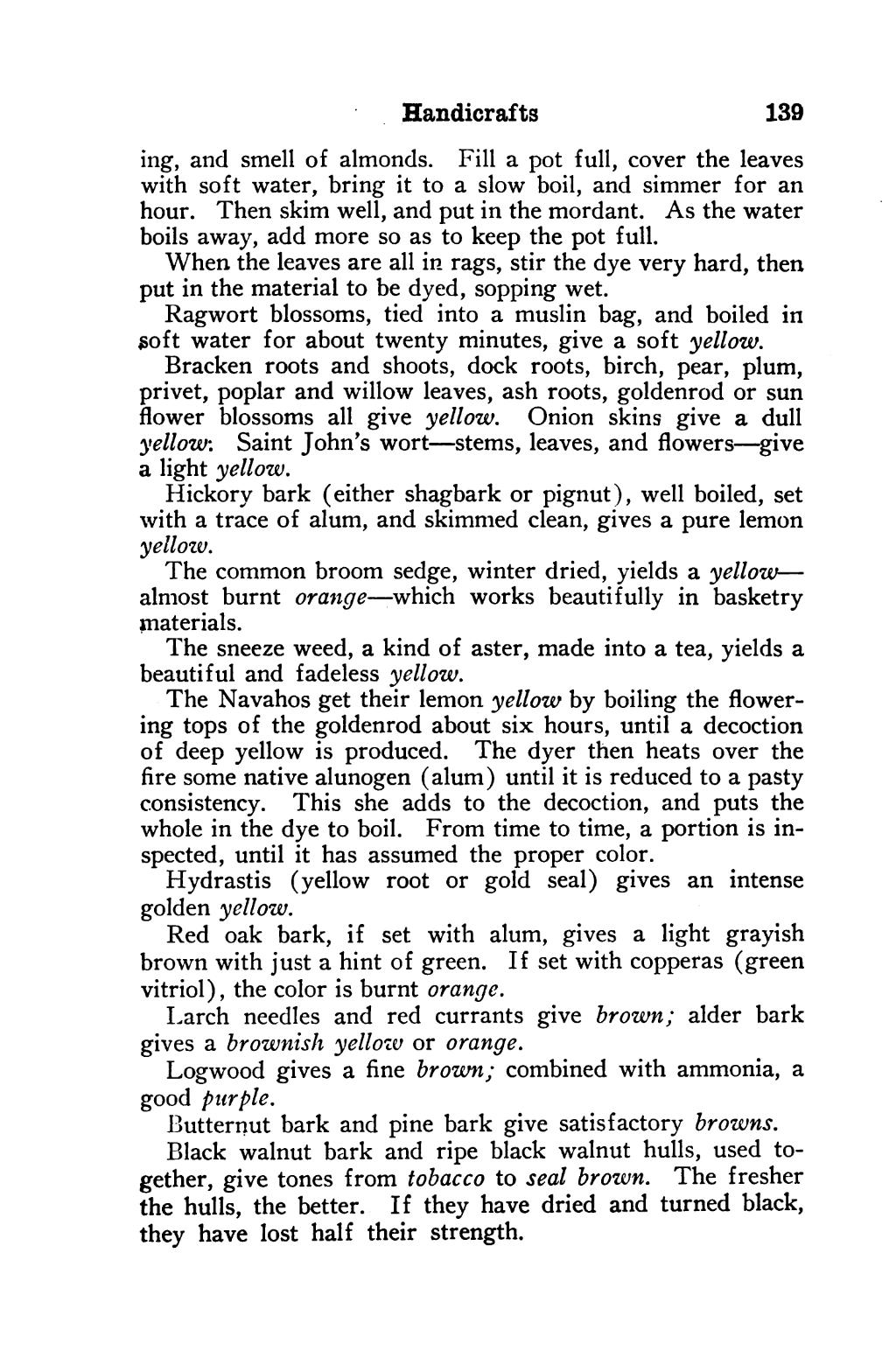_ Handicrafts 139 ing, and smell of almonds. Fill a pot full, cover the leaves with soft water, bring it to a slow boil, and simmer for an hour. Then skim well, and put in the mordant. As the water boils away, add more so as to keep the pot full. When the leaves are all in rags, stir the dye very hard, then put in the material to be dyed, sopping wet. Ragwort blossoms, tied into a muslin bag, and boiled in soft water for about twenty minutes, give a soft yellow. Bracken roots and shoots, dock roots, birch, pear, plum, privet, poplar and willow leaves, ash roots, goldenrod or sun flower blossoms all give yellow. Onion skins give a dull yellow. Saint John’s wort—stems, leaves, and flowers—give a light yellow. Hickory bark (either shagbark or pignut), well boiled, set with a trace of alum, and skimmed clean, gives a pure lemon yellow. The common broom sedge, winter dried, yields a yellow— almost burnt orange—which works beautifully in basketry materials. The sneeze weed, a kind of aster, made into a tea, yields a beautiful and fadeless yellow. The Navahos get their lemon yellow by boiling the flower- ing tops of the goldenrod about six hours, until a decoction of deep yellow is produced. The dyer then heats over the fire some native alunogen (alum) until it 1s reduced to a pasty consistency. This she adds to the decoction, and puts the whole in the dye to boil. From time to time, a portion 1s 1n- spected, until it has assumed the proper color. Hydrastis (yellow root or gold seal) gives an intense golden yellow. Red oak bark, if set with alum, gives a light grayish brown with just a hint of green. If set with copperas (green vitriol), the color is burnt orange. Larch needles and red currants give brown; alder bark gives a brownish yellow or orange. Logwood gives a fine brown; combined with ammonia, a good purple. Butternut bark and pine bark give satisfactory browns. Black walnut bark and ripe black walnut hulls, used to- gether, give tones from tobacco to seal brown. The fresher the hulls, the better. If they have dried and turned black, they have lost half their strength.
Stránka:roll 1931.djvu/155
Z thewoodcraft.org
Tato stránka nebyla zkontrolována
